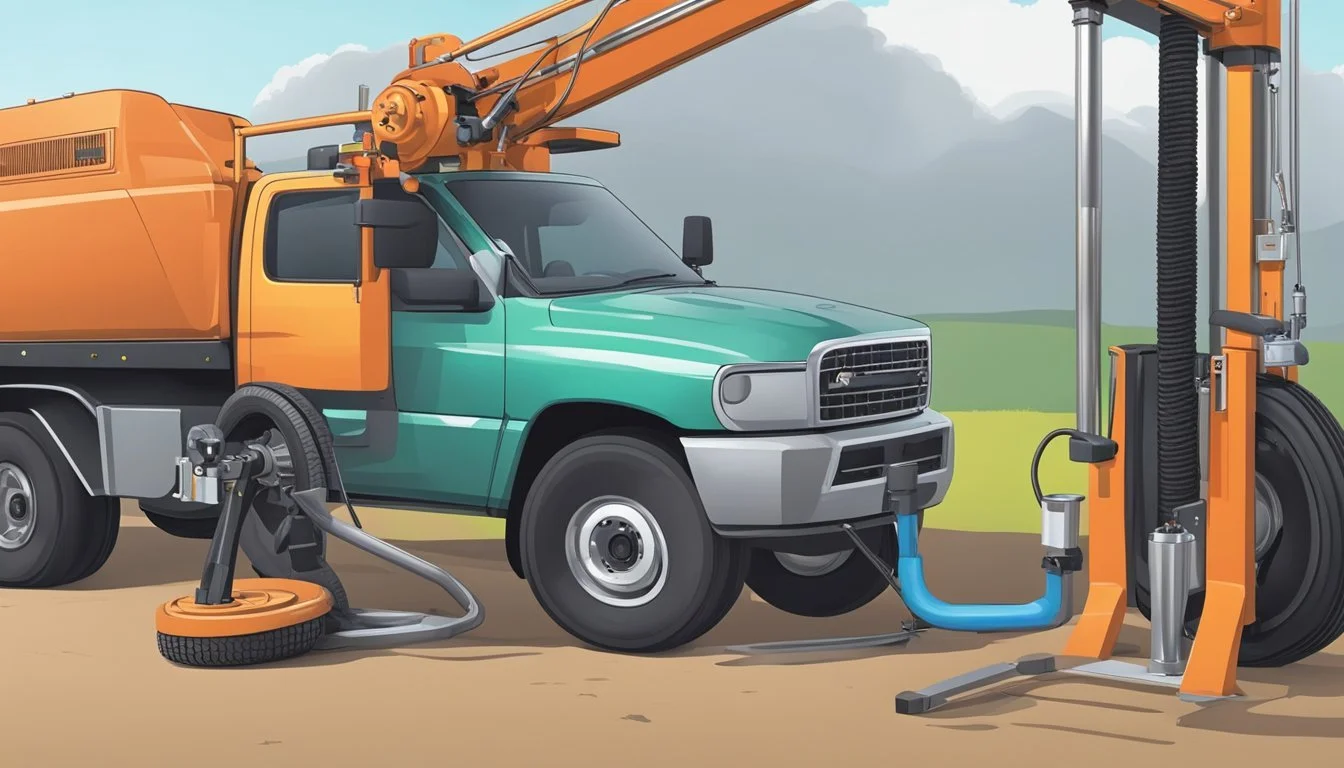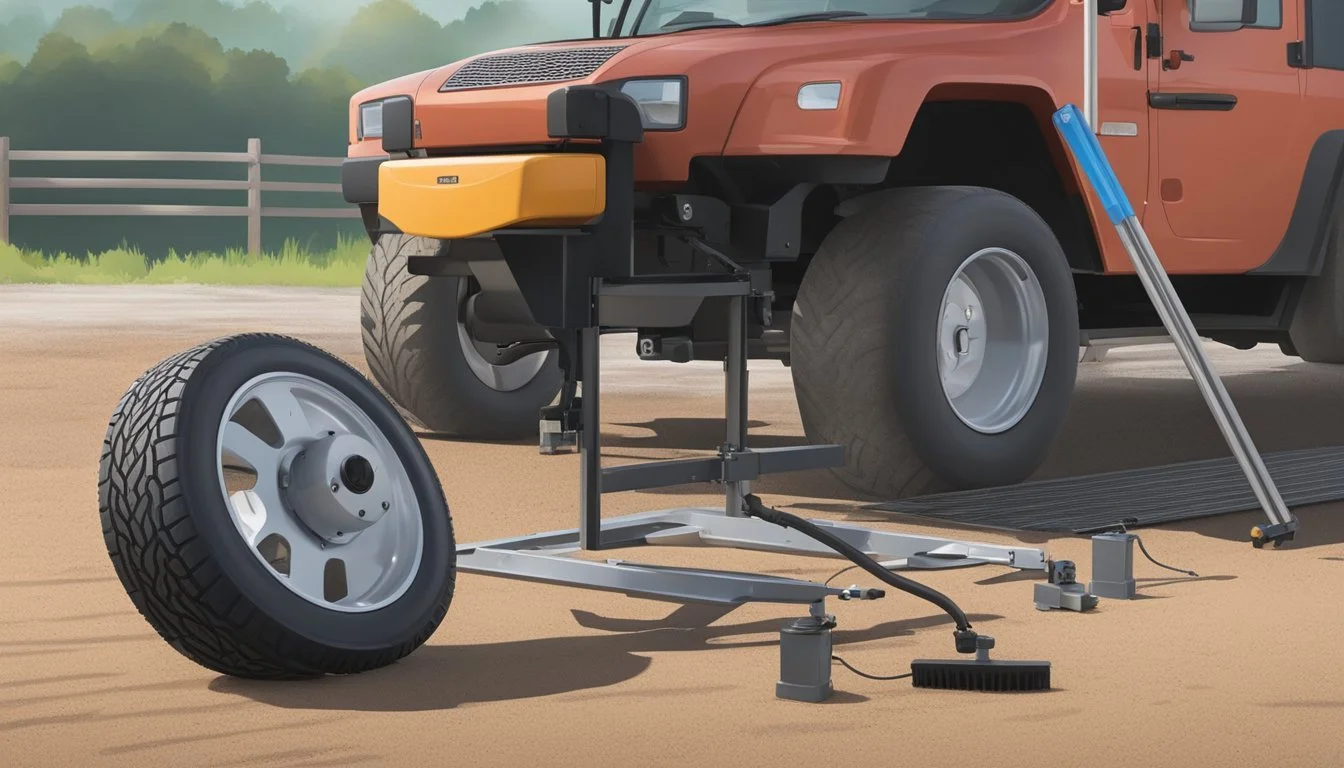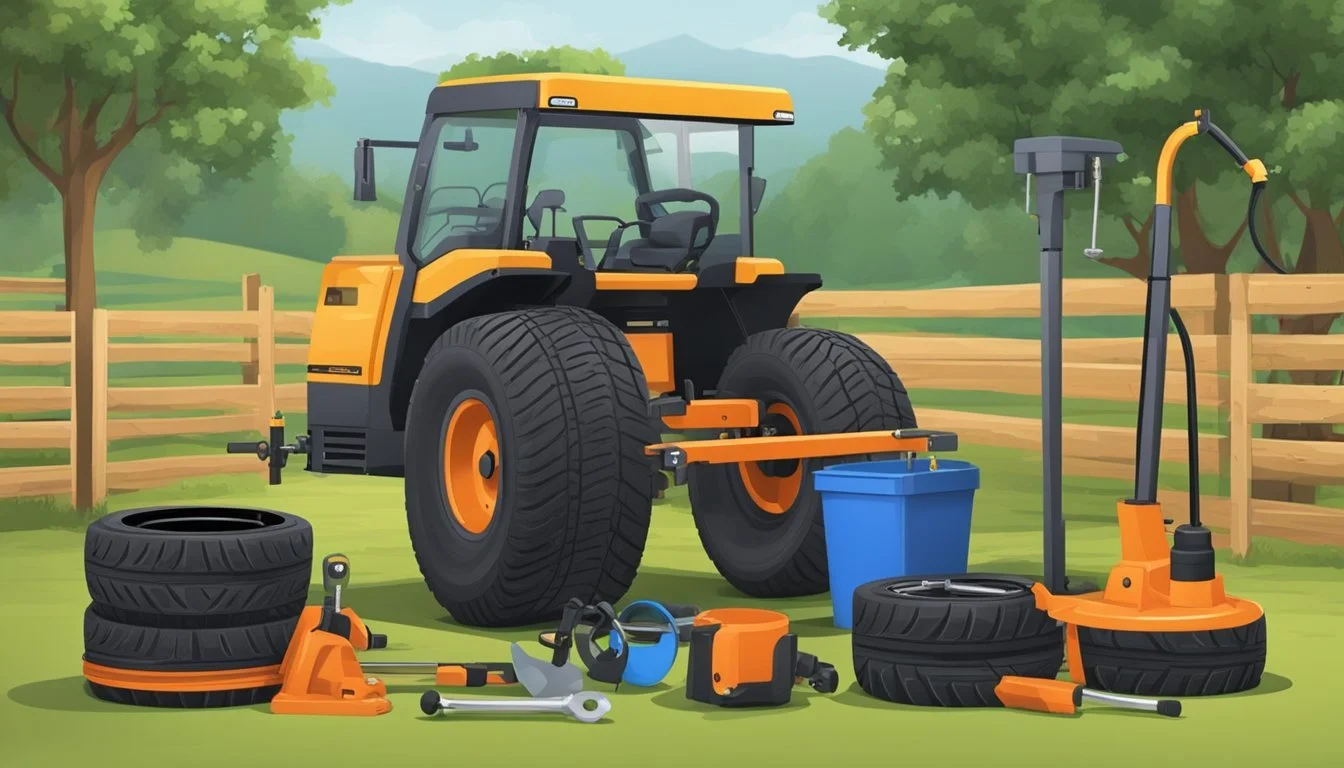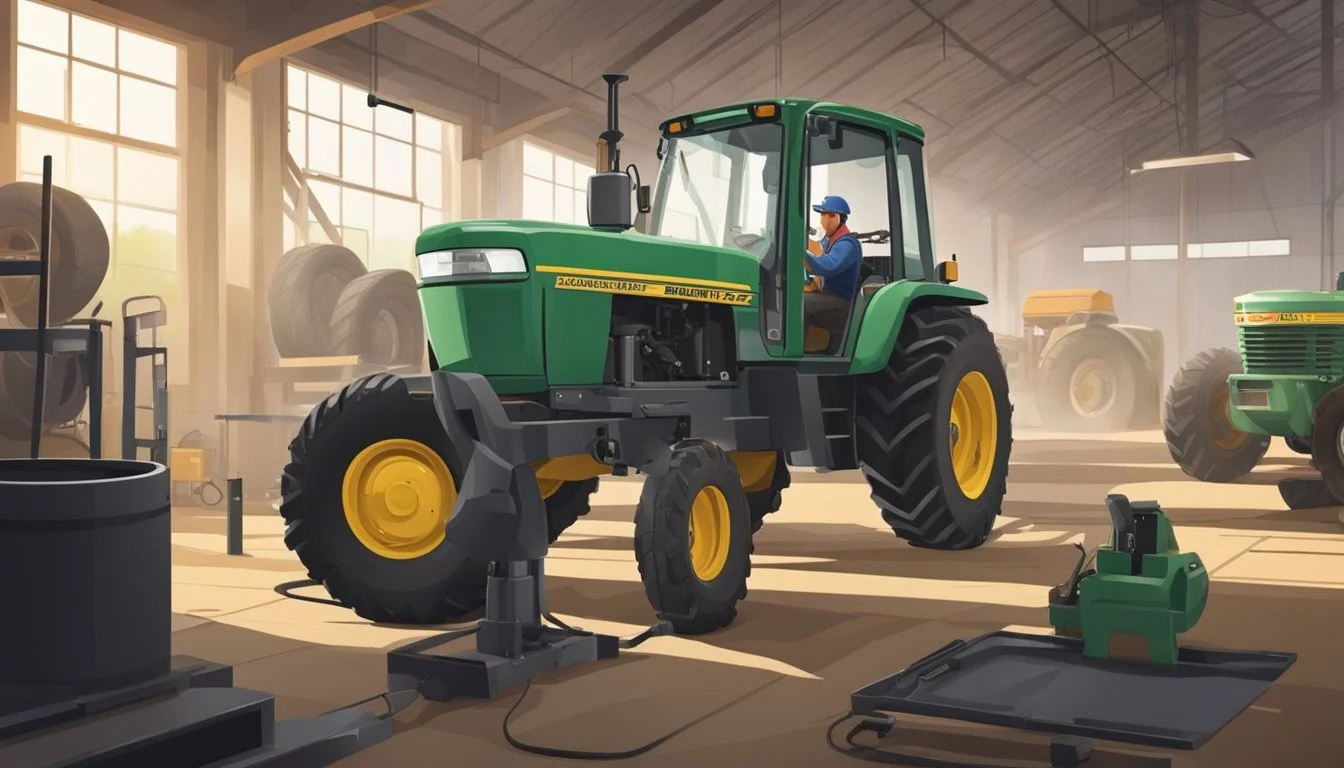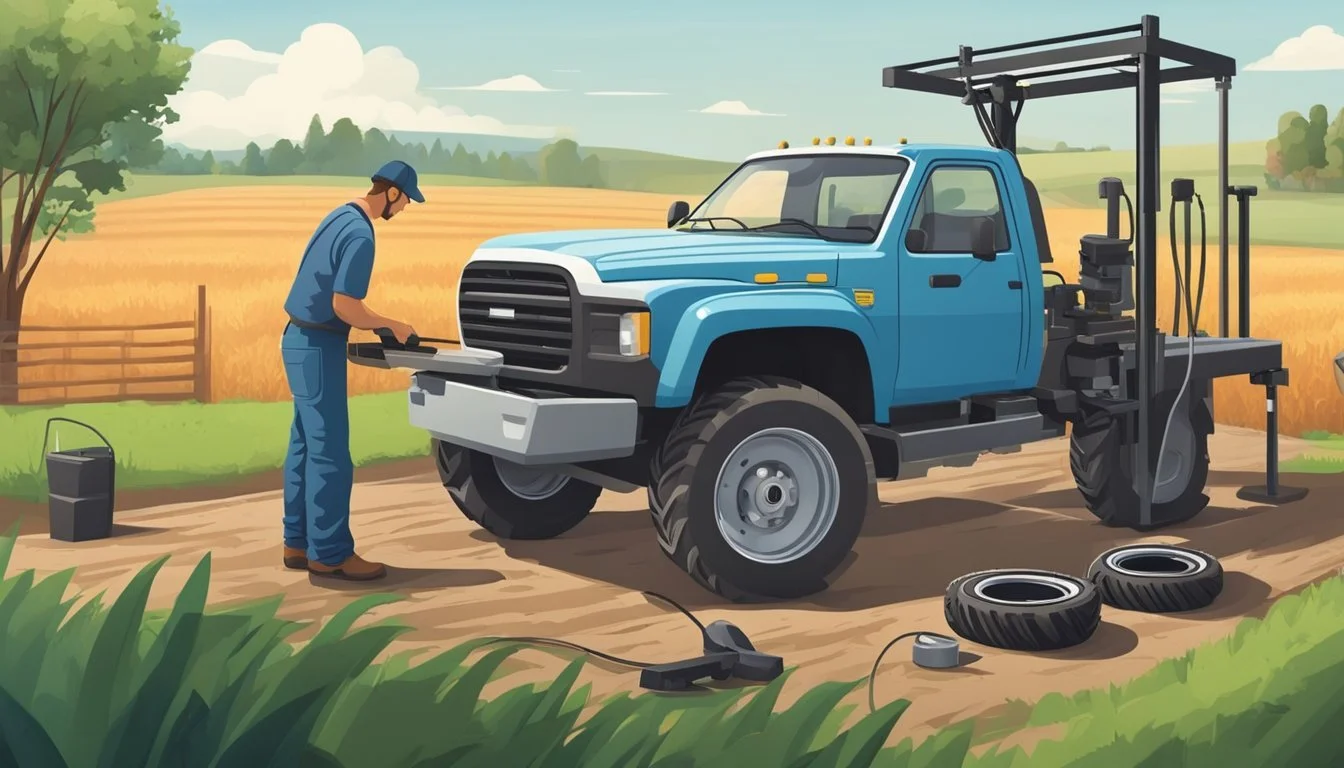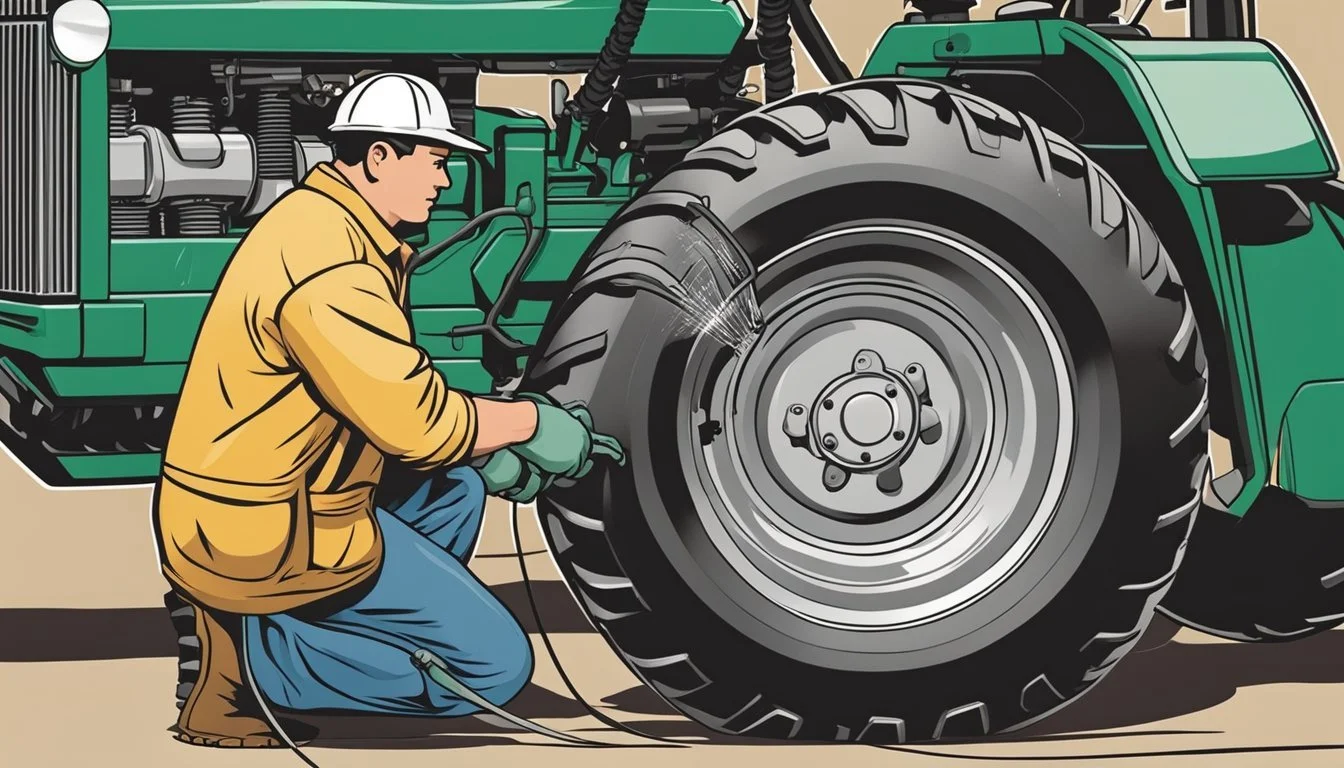The Ultimate Guide to Using a Pneumatic Tire Changer
Master Farm Vehicle Tire Changes
Changing tires on farm vehicles is a task that requires not only strength but also precision to ensure the safety and longevity of both the tire and the vehicle. Pneumatic tire changers have become an essential tool for this purpose, streamlining the process and minimizing physical strain. This equipment uses compressed air to remove and install tires on the wheel rims efficiently, which is especially beneficial when dealing with the heavy-duty tires found on farm vehicles.
Using a pneumatic tire changer allows for a more controlled environment when changing tires, reducing the risk of damage to the tire bead or wheel. Farm vehicles often operate under demanding conditions, and ensuring that their tires are correctly mounted can prevent accidents and costly downtime. This guide provides essential knowledge for anyone looking to operate a pneumatic tire changer, covering the proper techniques, safety precautions, and maintenance tips to get the job done effectively.
The complexity of tire changers may vary, but the basic principle behind their operation remains consistent. They require an understanding of the components involved, such as the bead breaker, turntable, mounting and demounting tools, and the control pedals. Properly leveraging these elements not only protects the tire and wheel but also ensures a swift tire-changing process, which is particularly crucial during the busy farming seasons.
Understanding Tire Changers
Tire changers are essential tools for efficiently removing and installing tires on farm vehicles. They come in various types, each having unique components suitable for different tire-changing needs.
Components of a Tire Changer
A pneumatic tire changer typically consists of the following key components:
Mount/Demount Mechanism: This part includes a tool used to pry the tire off of the wheel (demount) and aid in attaching the tire back onto the wheel (mount).
Table Top: The part of the tire changer where the wheel is clamped and rotated.
Bead Breaker: A blade and arm system designed to separate the tire bead from the rim.
Air Pressure System: Includes hoses, valves, and a compressor that provide the necessary pneumatic force for the bead breaker and to inflate the tire.
Foot Pedals: These control the table rotation, bead breaking, and other functions, allowing hands-free operation.
Types of Tire Changers
Tire changers can be broadly classified into the following:
Manual Tire Changer: Operated by hand and requires more physical effort. Ideal for locations without access to a power source.
Automatic Tire Changer: Features automatic functions for clamping and bead breaking, reducing manual labor.
Leverless Tire Changer: Advanced type that eliminates the need for tire levers, minimizing the risk of damage to the tire or rim.
Selecting the Right Tire Changer
When selecting a tire changer for farm vehicles, consider the following factors:
Tire Size and Volume: Ensure the changer accommodates the range of tire sizes commonly used in farm equipment.
Frequency of Use: For frequent tire changes, an automatic or leverless tire changer can significantly improve efficiency.
Space: Manual changers require less space than automatic ones and can be more suitable for small workshops.
Power Source: Automatic and leverless changers require electricity and compressed air, ensure compatibility with onsite resources.
Preparation for Tire Changing
Before engaging in the process of changing tires on farm vehicles, it is crucial to understand the preparatory steps involved. These steps ensure safety, proper use of tools, and accurate inspection of the tires and wheels.
Safety Precautions
One must prioritize safety by donning protective equipment such as safety glasses and durable gloves. It is also important to secure the area by ensuring the pneumatic tire changer is positioned on a level and stable surface to prevent any accidental slippage or movement during operation.
Protective Equipment:
Safety glasses
Durable gloves
Secure Area:
Level surface
Stable environment for equipment
Tools and Equipment
To perform a tire change, the following tools and equipment are necessary:
A pneumatic tire changer with its respective bead-breaking and mounting tools
Tire irons and bead lubricant to facilitate the dismounting and mounting process
An air compressor to power the pneumatic machine
A tire pressure gauge to ensure the proper inflation after installation
Pneumatic Tire Changer
Tire Irons
Bead Lubricant
Air Compressor
Tire Pressure Gauge
Inspecting the Tire and Wheel
Thorough inspection of the tire and wheel must be conducted prior to removal. This includes checking for any visible damage such as cuts, punctures, or abnormal wear patterns on the tire's surface, as well as inspecting the wheel for dents, cracks, or any signs of corrosion.
Tire Inspection:
Cuts and punctures
Wear patterns
Wheel Inspection:
Dents and cracks
Corrosion signs
The Tire Changing Process
The tire changing process for farm vehicle tires involves proper removal, mounting, and inflation to ensure safety and performance. Tailored techniques and tools like a pneumatic tire changer and bead breaker are critical for efficiency.
Removing the Old Tire
One begins the tire change by positioning the tire on the changer's base, ensuring the rim aligns with the tire changer's mounts. A bead breaker is then used to loosen the tire bead from the rim. Care is taken to press the bead breaker's arm just above the wheel rim to avoid damage. Once the bead is broken away from both sides, the old tire is leveraged off the rim.
Mounting the New Tire
The technician lubricates the bead of the new tire to facilitate easier mounting. He or she then places the tire onto the rim, making sure the bead falls into the well of the rim. Using the changer's mounting arm, the tire is rotated while guiding the bead over the rim's edge. This may take several passes until the tire is fully seated on the rim.
Bead Seating and Inflation
For bead seating, the tire is inflated rapidly to push the bead against the rim, creating an airtight seal. Once seated, the tire's inflation is adjusted to the manufacturer's recommended pressure level. This tire inflation step is crucial, as improper inflation can lead to tire failure or damage. During inflation, one should always stand clear of the trajectory path and use a clip-on air chuck with a remote inflation device for safety.
The steps above, performed with attention and adherence to safety standards, ensure the farm vehicle tire change is executed reliably and effectively.
Using a Pneumatic Tire Changer
Pneumatic tire changers provide an efficient means for handling farm vehicle tire changes, leveraging controlled compressed air to operate various machine parts for bead breaking and demounting tires.
Operating the Machine
To use a pneumatic tire changer, one must first connect it to a suitable air compressor and ensure that the air pressure is set in accordance with the machine's specification. The changer typically features a control pedal system that activates the clamping arms, bead breaker, and rotation of the turntable. Clamping the wheel securely is the initial step, where the operator positions the wheel on the turntable and tightens the clamps against the rim edge using the foot pedals.
Bead Breaking with Pneumatics
Bead breaking is achieved by positioning the bead breaker blade against the tire's bead. Safety is paramount; the operator must ensure the blade is just touching the tire and not the rim. Pressing the bead breaker pedal engages pneumatics, which forces the blade to push the bead away from the rim. This action should be performed on both sides of the tire to ensure complete bead separation.
Mounting and Demounting Techniques
For demounting the tire, the operator must align the demounting tool with the bead. Through a series of controlled pedal operations, the tool is inserted between the tire and rim and rotated around the circumference to remove the tire. Mounting a new tire involves placing the tire over the rim and using the mounting head in a rotation that allows the bead of the tire to slip over the rim edge. Throughout the process, appropriate tire lubrication is essential to prevent damage and to assist in mounting and demounting.
Tire Changer Features and Add-Ons
Selecting the right pneumatic tire changer for farm vehicle tire changes involves understanding the core features that enhance efficiency and safety, as well as additional accessories that can provide further convenience. It's also important to consider maintenance needs and warranty coverage as part of the purchasing decision.
Advanced Features
Modern pneumatic tire changers for farm vehicles come equipped with a range of advanced features designed to handle large tires with ease. Automatic bead breakers and adjustable rim clamps are essential for accommodating various tire sizes. High-torque turntables allow for precise control when mounting or demounting tires. Additionally, some machines offer integrated pressure gauges and bead inflation systems that ensure tires are filled to the correct pressure.
Bead Breakers: Hydraulic-powered for tough farm vehicle tires.
Rim Clamps: Extendable to fit a wide range of rim diameters.
Turntables: Variable speeds for better handling.
Integrated Gauges: For accurate air pressure control.
Optional Accessories
To enhance functionality, pneumatic tire changers may include or offer optional accessories. Tools such as mounting heads with polymer inserts protect rims from damage, while tire levers and spacers can aid in difficult tire removals. Assist arms provide extra leverage, making it easier to change tires on heavy-duty farm vehicles.
Mounting Heads: With replaceable polymer inserts.
Assist Arms: For additional support and leverage.
Maintenance and Warranty
Regular maintenance ensures the longevity and reliability of a pneumatic tire changer. Manufacturers typically provide maintenance kits and detailed user manuals. As for warranty, it’s common to find limited warranties that cover any defects in materials or workmanship, often extending up to a year or more. Buyers should review the warranty terms to know what parts and labor are included.
Maintenance Kits: Including seals and essential lubricants.
Limited Warranty: Typically 1 year, covering parts and labor.
Considerations for Farm Vehicles
When selecting a pneumatic tire changer for farm vehicles, it's essential to consider the specific requirements of agricultural equipment. The type, size, and frequency of tire changes will dictate the most suitable tire changer.
Tire Sizes and Compatibility
Tire Sizes: Farm vehicles operate with a variety of tire sizes. An appropriate pneumatic tire changer must accommodate everything from small ATV tires to large heavy-duty tractor tires. Before purchasing, verify that the machine can handle the full range of tire diameters and widths you intend to service.
Compatibility: The changer should be compatible with the bead and sidewall construction of farm vehicle tires. Many agricultural tires have reinforced sidewalls and bead designs that differ from standard automotive tires, demanding a changer that can grip and handle such variations without causing damage.
Weight and Portability
Weight: The weight of a pneumatic tire changer can affect its stability and durability when handling heavy farm vehicle tires. A robust build is preferred to ensure longevity, but this often comes at the cost of increased weight.
Portability: If tires need to be changed in multiple locations, such as in the field or at different farm sites, a portable tire changer becomes a valuable asset. Portability should not compromise the machine’s ability to manage heavy-duty tires. Look for a balance between sturdy construction and manageable weight to enable transport with minimal effort.
Heavy-Duty vs. Light-Duty Changers
Heavy-Duty Changers: These changers are built to withstand the rigors of large, rugged tires found on agricultural machinery. They typically feature powerful bead breaking and mounting capabilities suited for thick, reinforced tires common to farm vehicles.
Light-Duty Changers: Designed for more common tire types, such as those found on light trucks and ATVs. While less suitable for oversized agricultural tires, they provide sufficient service for smaller vehicles around the farm. Assess the main tire types in your agricultural fleet to determine whether a heavy-duty pneumatic tire changer is necessary or if a lighter model will suffice.
Prices and Buying Tips
When seeking a pneumatic tire changer for farm vehicle tire changes, it’s important that buyers evaluate different price points, know where to purchase, and understand how to secure the best deal. This section guides you through these critical considerations.
Evaluating Price Points
The price of pneumatic tire changers can significantly vary based on factors such as brand reputation, capacity, and additional features. Typically, buyers should expect to pay anywhere from $1,000 to $5,000 for a model suitable for farm vehicles. Commercial-grade changers with advanced capabilities may have higher price tags.
Entry-Level: $1,000 - $2,000
Mid-Range: $2,000 - $4,000
High-End: $4,000 and up
Where to Buy
Pneumatic tire changers can be purchased from a variety of sources:
Local Agricultural Equipment Suppliers: They offer the advantage of in-person advice and immediate availability.
Online Retailers: A broad selection is available, often with competitive pricing.
Directly from Manufacturers: This option may offer the best post-purchase support.
When choosing a seller, consider factors like warranty, customer service, and delivery options.
Getting the Best Deal
Securing the best deal involves more than finding an affordable price; it’s about value for money. Here are some tips for getting the most from your investment:
Compare Prices Online: Check multiple online platforms for price variations.
Look for Sales or Discounts: Take advantage of seasonal sales or bulk purchase discounts.
Consider Second-Hand Equipment: Used changers can be cost-effective, provided they’re in good working condition.
Read Reviews: Other users’ experiences can indicate the best models within your budget.
Remember, investing in a quality pneumatic tire changer saves money in the long term through reduced maintenance and downtime.
Frequently Asked Questions
What is a pneumatic tire changer and how does it work? A pneumatic tire changer is a machine that utilizes pressurized air to remove and install tires on rims. It operates with a foot pedal that controls the bead breaker, mount/demount mechanism, and the inflation of tires.
What are the safety precautions when using a pneumatic tire changer?
Always wear protective equipment, including safety glasses and gloves.
Verify that the machine is in good working condition before use.
Follow the manufacturer's guidelines for operation.
Do not exceed recommended tire pressure.
How can one select the right pneumatic tire changer for farm vehicles?
Check maximum tire size and rim diameter compatibility.
Consider the durability and strength required for heavy farm vehicle tires.
Look for features that cater to the specific needs of agricultural tires, such as bead breaking power and adaptability to different tire types.
What are the common mistakes to avoid while using a pneumatic tire changer?
Avoid overinflating the tire as it may lead to damage or injury.
Do not force the tire onto the rim; use the machine's controls to adjust accordingly.
Ensure the tire is correctly aligned on the machine to prevent slippage.
Is it necessary to be trained before operating a pneumatic tire changer? It is highly recommended to undergo proper training or follow the user manual diligently to ensure safe and efficient operation of the machine. Untrained use can lead to equipment damage or personal injury.
Final Thoughts
When it comes to pneumatic tire changers for farm vehicle tire changes, operators should always regard safety and efficiency as paramount. They ensure a significant decrease in manual labor and offer a reliable solution for maintaining agricultural vehicles. The correct use of this equipment not only saves time but also reduces the risk of damage to tires and rims.
Operators must be trained in the proper handling of these machines to leverage their full potential. Consistent maintenance of the pneumatic tire changer is crucial—it prolongs the life of the machinery and ensures operational safety. When performing tire changes, following the manufacturer's guidelines is not just recommended but essential to prevent any accidental mishaps.
Here are key takeaways for using pneumatic tire changers effectively:
Safety: Always wear protective gear and follow safety protocols.
Training: Proper instruction empowers operators to use the machines competently.
Maintenance: Regularly check and service the tire changer to maintain its functionality.
Efficiency: A well-operated tire changer can streamline the tire-changing process for farm vehicles, minimizing downtime.
Manual Reading: Thoroughly understand the operation manual for best practices.
In summary, a pneumatic tire changer is an invaluable tool for farm vehicle maintenance. Its adoption can lead to a safer, swifter, and more efficient tire-changing process, provided it is used with the care and attention it demands.

